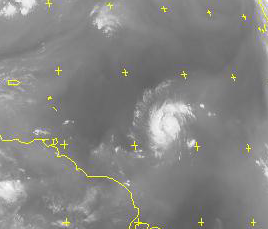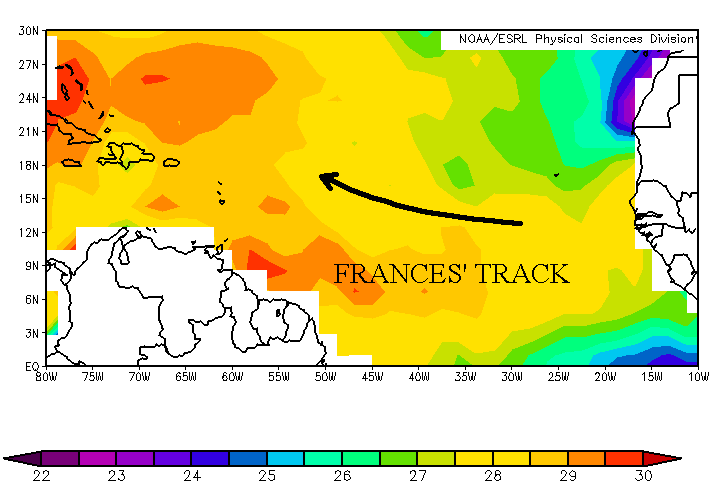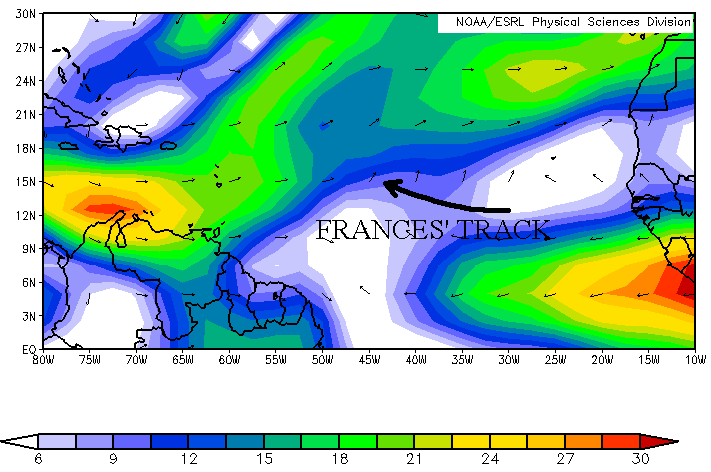the lighter colors near and to the east of the storm representing
higher levels of moisture. Also, the darker colors north of the
storm represent much drier air. If Frances moved into this environment, dry air entrainment would soon begin, choking the storm. Instead, it stayed on a track more to the west into an environment where the moisture was high enough for continued growth.



